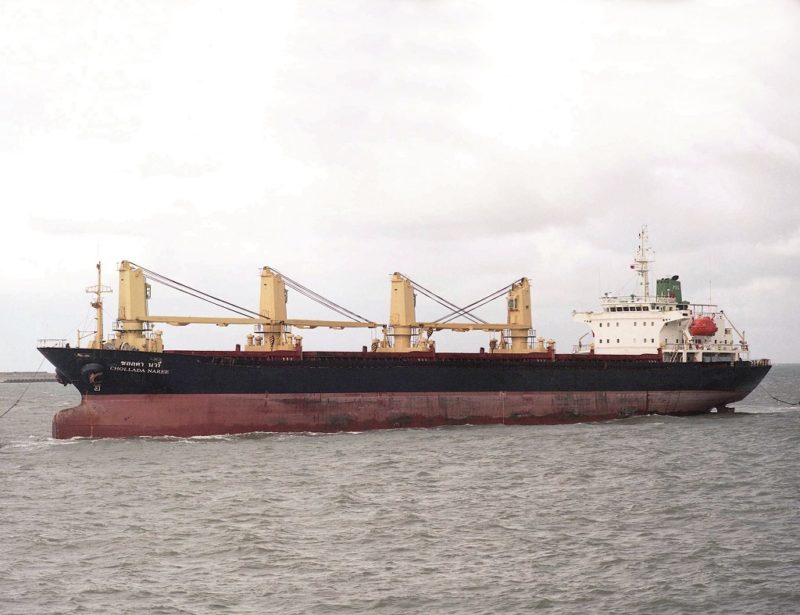
During the last 35 years, a big fleet of bulkers and general cargo ships has been operated by an Indian family of entrepreneurs with a business history dating back to 1860. In that year, Khetsee Khinsi Harbham left his home in the rice trading district of Kutch in north west India. He headed to the trading districts of Bombay to find work among his fellow Kutchis, who ran 80% of the rice trade at that time. He quickly found work and then started up his own business in the rice trade when his son Devjee Khetsee Khinsi joined him in Bombay in 1868 to form Devjee Khetsee & Company, which later became the big Indian trading group of GP Group.
Khetsee Khinsi is the great, great, grandfather of the current GP Group Chairman, Kirit Chamanlal Shah. The company expanded into Rangoon in Burma, also part of the British Raj at that time, and as their business increased, they set up an office in Calcutta to help with shipments in chartered ships arranged by shipping companies and freight forwarders. The company of Gangjee Premjee began trading after the turn of the century in Bombay and Rangoon, but shipments of rice ground to a halt when World War I began in 1914. At the end of the war in 1918, rice trading developments in Thailand, South East Asia and the Middle East began to be made by Shivjee Devjee Khetsee, grandson of the founder, running the company. He established a strong team of rice traders with two more offices opened in Burma and one in Ceylon.
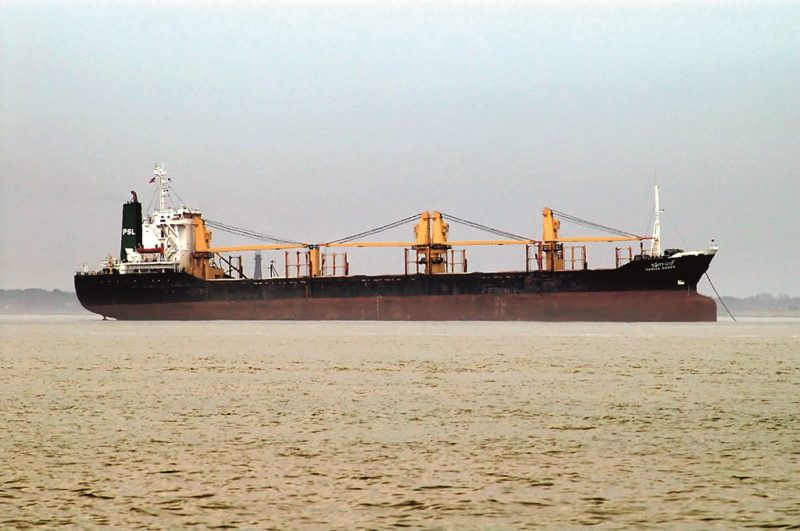
Gangjee Premjee & Company was the only Indian operated rice trader in Thailand from 1918 to 1997 after the company moved to Thailand in 1918. Business grew steadily in the inter-war years and was only halted when the Japanese took over South East Asia in December 1941. In 1946, Chimanlal Shivjee Shah worked alongside his father Shivjee, and played a pivotal role in building the good reputation of the business. He focussed on securing a major trading deal every month, and pioneered new grain and rice markets in the Middle East and East Africa.
Thailand later became a big source of rice when it served as a base for U. S. forces in the Vietnam War. The roads and railways of Thailand enabled rice farmers to more easily transport their produce around the country. Chimanlal used this network to good advantage to develop rice exports to new markets overseas.
Kirit Chimanlal Shah at the age of 21 years and the son of Chimanlal Shivjee Shah, joined his father to run the business of Gangjee Premjee & Company in Bangkok in 1974. In order to transform the business into a global rice and grain trader, Kirit was sent on a Round the World trip to build relations with new trading partners. His father had been content for over fifty years with trading to the well-developed markets in East Africa, India and Burma, but Kirit was convinced that the Persian Gulf of the oil rich Arabs should be the focus of new business. He also began trading in a much wider set of commodities other than rice in 1975. Kirit Chimanlal Shah took the helm of the family business in 1980 and renamed it as G. Premjee & Company. The Persian Gulf, East Africa and the Middle East were the new trading areas of the company, and owned ships began to be purchased in 1987 instead of the use of chartered ships that the parent company of GP Group had been chartering since 1983 when a shipping division was set up.
During 1987 to 1989, the company purchased seven second-hand vessels and the acquisition of these led to the formation of the Great Circle Shipping Agency in 1988 to recruit seafaring personnel and manage the technical aspects of shipowning. Precious Shipping was formed a year later on 1 December 1989 with a capital of 1 million Baht, the Thai currency, for the owned fleet, and was converted into a Public Limited Company (PLC) on 18th February 1994.

The PSL owning family are of Indian stock, and in July 1991 India had a bulk carrier fleet of 4.574 million tonnes deadweight together with 3.891 million tonnes deadweight of combination ore-oil carriers and tankers to give a total tonnage of 8.465 million tonnes deadweight or 1.70% of the world bulk fleet. In comparison, the biggest bulk fleet in the world at that time was owned by Nippon Yusha Kisen (NYK) of Japan with 57 bulkers of 4.502 million tonnes deadweight. The second biggest bulk fleet at that time was owned by Navix Line of Tokyo with 46 bulkers of 4.330 million tonnes deadweight.
The PSL double hull bulkers have always had crews of between 21 and 23 Thai seafarers, and are equipped with cranes of 30.5 tonnes capacity, which is reduced to only 24 tonnes capacity if they use their own grabs.
The bulkers and general cargo ships have carried cargoes of talc, barites, corn, tapioca, cane raw sugar, slag, pig iron, sunflower pellets, bauxite, clinker, wheat, malt, rice, soya beans, alumina, aluminium, zinc concentrates, urea, grain, timber, logs, coal, coke, ammonium sulphate, magnesium sulphate, apatite, nepheline, construction material of steel plates, steel pipes, steel coils, steel wire, steel pipes, rubber, pharmaceuticals, chemicals and many other cargoes.

The single ship subsidiary companies of Precious Shipping Ltd. (PSL) have ships registered under companies with names beginning ‘Precious’, followed by Metals, Gems, Timber, Wishes, Pearls, Stones, Lands, Lakes, Oceans, Planets, Diamonds, Sapphires, Emeralds, Rubies, Opals, Garnets, Pearls, Flowers, Trees, Ponds, Ventures, Jasmines, Orchids, Lagoons, Resorts, Comets, Moons, Venus, Neptune, Visions, Bridges, Forests, Fragrance, Thoughts, Tides, Skies, Glories, Graces and Sonnets. This system carries on to today with the fleet owned by many single ship companies beginning with the word ‘Precious’.
PSL SHIPPING ACTIVITIES FROM 1987 to 2022
The first ship in the fleet was the five hold, five hatch cargo-liner Kinzan Maru of 11,427 grt and 14,291 dwt, built in 1979 by Hyundai Heavy Industries at Ulsan as Rawa. She was purchased as River Kerawa from Nigerian National Shipping Line (NNSL), and was able to carry a deck cargo of 262 TEU of containers at a service speed of 16 knots from a B & W oil engine of 11,200 bhp. She was equipped with a Stulcken heavy lift derrick and several other derricks.
NNSL had been formed in 1959 by the Nigerian Government to take 40% of the Nigerian trade to Europe, with 40% of the trade for the existing European fleets trading to Nigeria, and 20% for cross traders. However, by 1988 a study showed that NNSL was making a much smaller contribution to the Nigerian economy than the cost of Nigerian resources used by the fleet, with NNSL taking only 11% of the cargoes offering at Nigerian ports.
Thus, the two dozen ships of NNSL, and those of smaller Nigerian carriers, were sold off in 1988 and NNSL was declared defunct by 1995.
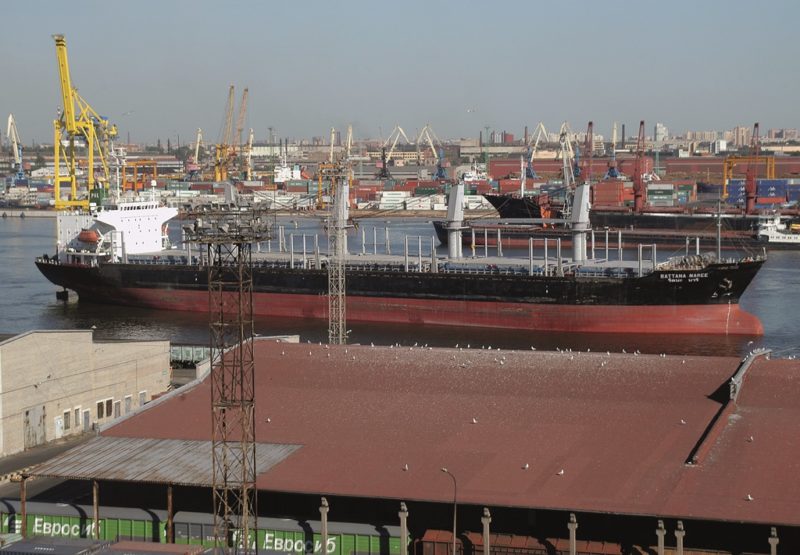
The second ship in the PSL fleet was Daizan Maru of 11,712 dwt, a three hold, three hatch general cargo ship built at Fukuoka Zosen as Bright Star and purchased as Asean Trader in 1988. She had a service speed of 13.5 knots from a Mitsubishi six-cylinder diesel engine of 6,500 bhp.
The third ship was the four hold cement carrier Fujisan Maru of 16,883 dwt built in 1976 in Japan and purchased as Camia 1, and she sailed from Singapore on 18th September 1988 for ports in Indonesia to load cement for the GP Group. She arrived at Montreal on 17th October 1995 to load cement, and continued in service with PSL until she arrived for breaking up at Alang on 10th January 2014. She was replaced by a quartet of purpose-built cement carriers in 2014.
The Precious Shipping Ltd. within a year or two began to use the suffix ‘Naree’ for all of its owned ships as ‘Naree’ is Bengali for ‘woman’, and a ship is always a ‘she’. A bright medium green funnel colour with ‘PSL’ in white was then adopted for the fleet. The first seven purchased vessels had been paid for by Gangjee Premjee & Company and parent company GP Group, however PSL raised enough financial equity to transfer the fleet in 1991 to PSL.
PSL was listed on the Thailand Stock Exchange on 16th September 1993 after obtaining approval from the Bank of Thailand and the Thailand Board of Investment.
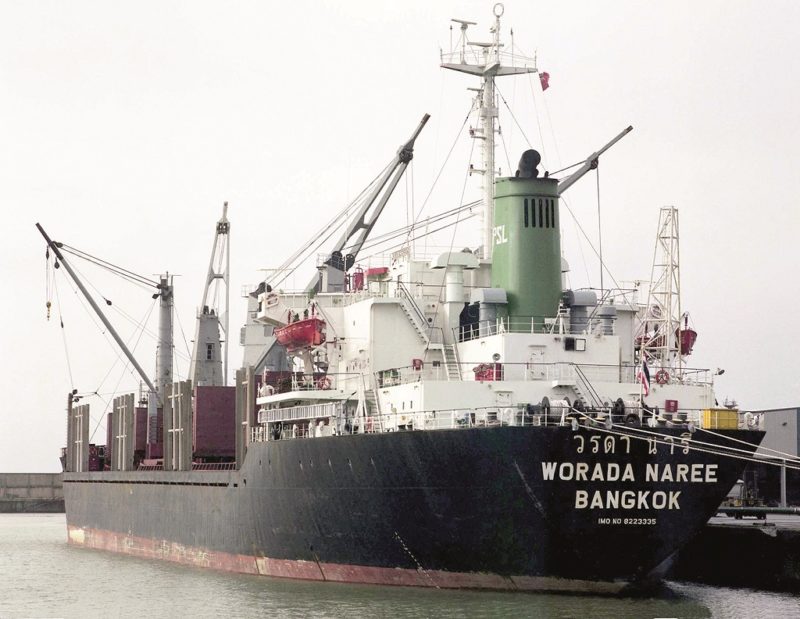
The dozen ships then owned in 1993 were Suthathip Naree, Kanok Naree, Patchara Naree, Rattana Naree, and Napporn Naree, together with Daizan Maru, Fujisan Maru, Hakkin Maru, Kinzan Maru, Kiso Maru and Kongo Maru. The bulker Soya of 12,050 dwt and built by Ujina Zoshensho at Hiroshima with a service speed of 13.0 knots from a B&W seven-cylinder engine of 6,200 dwt completed the dozen vessels, and was carrying soya cargoes around the Far East, West Africa and Europe.
However, the Asian financial crisis of 1997 disrupted PSL and the Premjee businesses, and Kirit Chimanlal Shah was forced to adapt his trading strategy to come up with some new ideas for cargoes and trading e.g. he invested in logistics companies and technology companies. The fleet in 1998 had grown to 52 owned and managed ships.
Long term chartered and managed ships in 1998 were Catherine Helen, Jineshwar, Michael R, Prima Cynthia, Saltnes, Tia Estela, Morning Orchid, NZOL Jaya, Rubin Rose, Sincere Prominence and Wise King with all of the fleet in the Handysize range of up to 30,000 dwt.

There was also a big short term chartered fleet on voyage or short time charter of the same Handysize range of bulker. PSL and the Great Circle Shipping Agency Ltd. both had offices in Sathorn North Road in Bangkok, as well as Matunga East in Mumbai.
The PSL fleet had grown rapidly in the 1990s in four phases:-
- PHASE 1 of 7 bulkers and general cargo ships of 101,925 dwt acquired by September 1989
- PHASE 2 of 6 more bulkers of 102,107 dwt acquired during July 1991 and January 1992
- PHASE 3 of 10 more bulkers of 185,923 dwt acquired during the year from December 1992
- PHASE 4 The fleet had grown to 52 owned, 11 managed and many more chartered ships by 1998 including the first purpose-built bulker Asipara Naree of 18,596 dwt and delivered on 22nd November 1996
The collapse of freight rates in 1998 meant that PSL had to slim down the size of its fleet from 1999 to 2003 to end up with only 28 owned ships in 2003. Kirit Chimanlal Shah wound down some of his commodity trading businesses in Millennium Year and sold a number of assets while keeping hold of the core businesses, and rebranding the businesses as the GP Group of companies in the same year.
PSL was able to pay off all of its strategic debt in 2003, and the GP Group strengthened and diversified the portfolio with stakes in the listed Thai company Christiani & Nielsen, and other shipping and commodity trading companies, pharmaceuticals companies, construction companies, and in other new sectors e.g. the aviation industry.
The GP Group of Thai and Indian companies today include Precious Shipping Ltd. (PSL), Great Circle Shipping Agency Ltd., Christiani & Nielsen, Golden Lime, Mega Lifesciences, Ambika Tour Agency, Eastern Energy, Alva Aluminium, Eka Software Solutions, Avani Atrium Bangkok Hotel in Bangkok, Geepee Air Services, Insure Xcellence, Linaria Chemicals, Maestro Controls, Majan Mining, Premthai Energy, Premthai Logistics, Oaks Hotels and many other businesses.
The Royal Thai General System (RTGS) of transcription has been used since 1932 to translate the very difficult Thai script into the Roman alphabet. It was published by the Royal Thai Institute of Thailand and is used on road signs and Government publications and is the closest method to a standard transcription for Thai.
The use even by Thai Government departments is however inconsistent, but it should be used permanently for all signs in a ‘dual’ way as it is defined by a standard ISO 11940-2 directive.
The Thai spoken dialect in Bangkok and Central Thailand is using the main Thai dialect. There are six floating markets in Bangkok e.g. Taling Chan Floating Market and Khlang Lat Mayom Floating Market, where goods are sold from vendor boats, and thus as a visitor one needs the use of a powered craft or canoe to complete one’s shopping!
The mining of tin has been historically important to Thailand but the reserves are now mainly exhausted, with rice, maize, sugar cane, coconuts, ground nuts, beans, tobacco, tapioca, kapok, fruit and rubber much more important. Freshwater and sea fishing provide much of the protein for the population. The chief manufactured exports of Thailand are processed food, cement, paper, electronic goods and computers, and account for the majority of the GDP of the country.
Tourism has been forced to close down during the last two years due to the global pandemic, with disastrous results for the hotel trade in Bangkok. One of the most famous beaches in Thailand re-opened to tourists on 1st January 2022 at Phi Phi Leh Island, with nearby Phuket following suit together with other resorts on the western coast of Thailand.
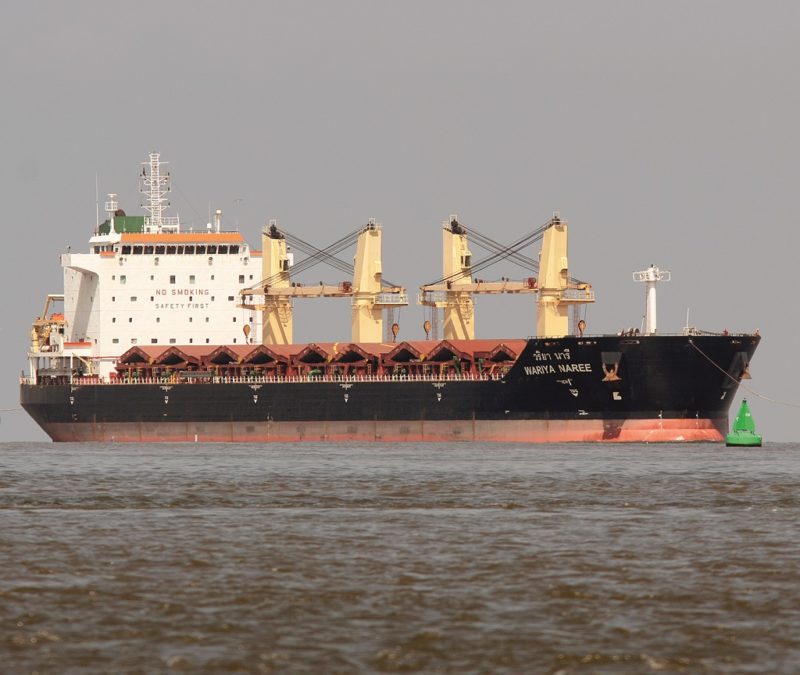
The marine life of this spectacular coast including Phang Nga Bay and Maya Bay has greatly improved and recovered during the hiatus of over two years, with speed boat companies, tourist agencies and hotels hoping that the once huge numbers of international tourists will return.
I hope this will be the case as Thailand has much to offer including the great temple of Angkor Wat with its renowned Khmer architecture, and lying just over the border in north west Cambodia.
Higher freight rates in 2005 increased the size of the PSL fleet to 54 owned ships and there were also seven managed ships and a large fleet of chartered ships.
Ten bulkers were sold off in 2007 and a further 25 ships were sold off during 2009/10 with only two new ships added during this time. This reduced the fleet size to 21 bulkers at the end of 2010. New bulkers were then added to the fleet from 2010 to 2017 as follows:-

- 2010 with one Handymax bulker of 56,000 dwt delivered, Handymax being defined as from just over 33,000 dwt to 56,000 dwt
- 2011 with 4 Handymax bulkers of 56,000 dwt delivered, 3 Handysize bulkers of 33,000 dwt delivered from the ABG yard at Magdala in Gujarat province in India
- 2012 with 4 Handymax bulkers of 56,000 dwt added from the Guoyu yard in China
- 2013 with 12 bulkers purchased or delivered from various yards
- 2014 with 3 cement carriers delivered from the Shanhaiguan yard in China and 2 Supramax bulkers of 62,500 dwt delivered
- 2015 with one Handymax bulker of 38,800 dwt delivered and three sold, 2 Supramaxes of 62,500 dwt delivered from the Sanfu yard in China, one cement carrier delivered
- 2016 with one Handymax bulker of 38,800 dwt delivered, 3 Supramax bulkers of 62,500 dwt delivered, and 13 Handysize bulkers sold
- 2017 with one Supramax bulker of 62,500 dwt delivered from the Sanfu yard, and one Handysize bulker sold
The PSL fleet carried 12.3 million tonnes of cargo in 2016, 11.7 million tonnes in 2017, 12.7 million tonnes in 2018, 13.72 million tonnes in 2019, and 12.4 million tonnes in 2020.
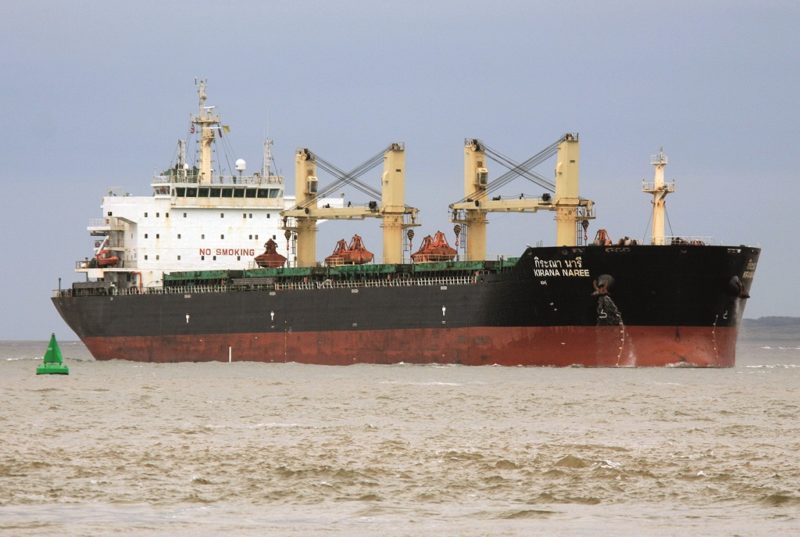
The cargoes in decreasing size of importance were cement, agricultural products, ores and concentrates, coal, fertilisers, steel, logs, salt, scrap metals, limestone, petroleum coke and other cargoes. The fleet had a size of around 36 to 40 bulkers from 2017 to the end of 2021.
The four eco-friendly grey hulled cement carriers were built in 2014 and 2015 and are all of 21,150 dwt and on charter to Ultratech Cement Ltd. based at Bhopal in India, the capital of Madhyar Pradesh province. The quartet were refinanced on 30th December 2021 by a loan facility worth US$80 million to be repaid over eight years in 32 quarterly instalments starting from that date. The cement carriers trade from the cement exporting port of Pipavav on the Gulf of Khambhat on the coast of Gujarat Province in India coastwise to Jawaharlal Nehru Port (Mumbai) and Colombo.
The cement is loaded and unloaded by electro-hydraulic gear, and they have a crew of 25 Indian seafarers.
PSL ANNUAL REPORT of 2020
This report was compiled and issued on 19th February 2021 and showed that the 36 bulker and cement carriers of the fleet had been engaged on Atlantic Region trading (60%) and Pacific Region trading (40%). Time charters of one to three months gave 76.63% of total income, and voyage charters gave 22.71% of total income, with 0.66% coming from other sources of income. The breakdown of voyages by cargo was as follows:-
Cargo Voyages % of Voyages
Cement 114 29.77
Agricultural 71 18.54
Steel 43 11.23
Fertilisers 34 8.88
Specialised ores 50 13.05
Coal 36 9.40
Forestry/logs 4 1.04
Other cargoes 31 8.09
TOTAL 383 100.00
Cement is carried coastwise by a quartet of cement carriers, thus the percentage is much higher of the total number of voyages. All of the fleet are equipped with fuel oil scrubbers to give an average carbon intensity in grams of carbon dioxide per nautical mile of only 9.941 grams.
PSL vessels avoid piracy attacks by sailing at least 250 nautical miles off the Somali coast, and have armed guards onboard whilst transiting the Gulf of Aden and the Bab al Mandeb area of the Southern Red Sea. The average age of the fleet was only nine years, and the only port investment was a 22.4% interest taken in the Haldia Port Dock in India.
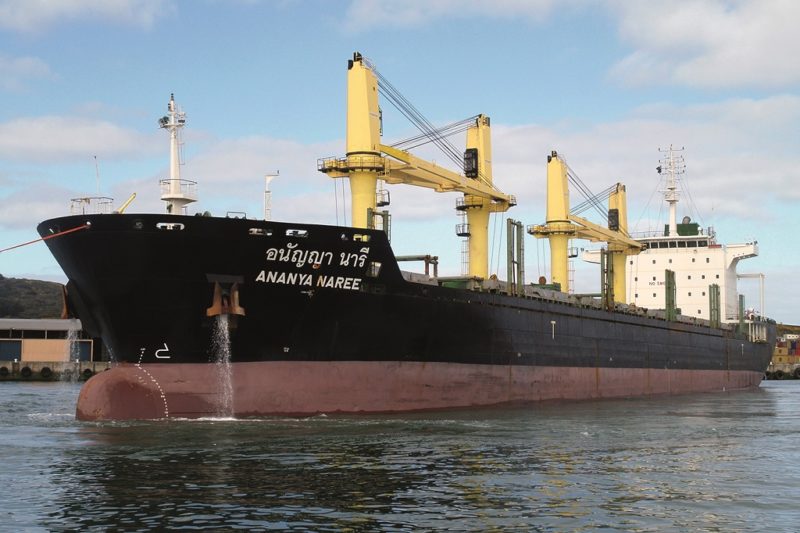
At the end of 2021, the PSL fleet stood at 36 ships of 1.586 million dwt. The paid-up capital of PSL at the end of 2021 was 1.559 Billion baht in the currency of Thailand or £31.184 million. The Shah family network of companies own 44.45% of the shares of PSL, while other shareholders own 55.55% of the shares. The PSL fleet is owned by thirty single ship Thailand companies as well as by Associated Bulk Carriers (Pte) Ltd. of Singapore.
The chartering of the fleet is done by subsidiary companies in Bangkok, Mumbai, London, Singapore and Panama. Ship technical management continues with the Great Circle Shipping Agency Ltd. of Bangkok. Kirit Chimanal Shah is currently working with his children Ishaan and Nishita to secure and build the future of Precious Shipping Ltd. (PCL) and the GP Group of companies. The Head Office of PSL and Great Circle Shipping Agency Ltd. are both at North Sathorn Road in Bangkok, and a Branch Office at Matunga East in Mumbai.
PSL bulkers, such as Urawee Naree and Tharinee Naree, regularly unload cargoes of alumina at Tiwai Point in Bluff Harbour on charter to Pacific Basin Shipping of Hong Kong, and then load cargoes of logs at the Island Harbour berths of the same port on the south tip of South Island in New Zealand. PSL vessels are also seen at many ports throughout Australasia including Tauranga, Lyttelton, Melbourne, Brisbane, Hobart, Sydney Harbour and Port Kembla. Calls in U.K. ports in recent years have also been made at the Tyne with biomass, with Inthira Naree arriving on 5th July 2018 and sailing in ballast for New Orleans, and at Liverpool and in the Foyle estuary in Londonderry and at Queen’s Island at Belfast to unload steel coils.
The Supramax bulkers of the fleet also carry coal from Australian ports, but during 2021 their destinations have not been to China as one would expect, but to ports in India (tonnage up 74%), the European Union (tonnage up 38.4%), Japan (tonnage up 16.7%) and South Korea (tonnage up 50.6%). Coal exports from Australian ports to China have declined by 96.9% due to political decisions made in Beijing not to take coal or trade with Australian ports. Australia remains as the global top exporter of coal with 30.8% of the trade, with Indonesia in second place with 27.9% of the global coal trade.
The Handymax bulker Vipha Naree in May 2021 was on charter to Pan Ocean of Korea carrying steel from Song Duong to Siracha in Thailand, where she dry-docked at Laem Chabang on 16th June before continuing to Ravenna and Setubal. She then ballasted to St. Petersburg and went on charter to the Quest Group for a voyage with fertiliser from St. Petersburg to Riga. She then loaded slag in bulk for a charter to Asia Maritime Pacific for Three Rivers on the St. Lawrence, followed by wheat from Montreal to Tema (Ghana) and Lagos (Nigeria) on charter to Olam International Ltd. She then ballasted to Vitoria in Brazil to load pig iron for New Orleans for American Bulk Transport. She then loaded biomass at Savannah for the Tyne, arriving on 17th October 2021, and after discharge she loaded more biomass at Ust Luga in Baltic Russia on 4th November 2021.
Ananya Naree arrived in Liverpool on 2nd December 2021 with a cargo of grain loaded at Brunswick (GA), from where she had sailed 11th November 2021.
Four PSL bulkers were open for chartering at the end of November 2021, including Sarita Naree at Vera Cruz in Mexico after ballasting there from Savannah. A further five bulkers were open for chartering until dates throughout December 2021, including Ananya Naree at Liverpool, Charana Naree at Port Said, Wikanda Naree at Antwerp, Sarocha Naree at Cape Town, and Issara Naree at Amsterdam. The year of 2022 may see the green funnelled bulkers of Precious Shipping Ltd. (PSL) earn even higher freight rates than those very elevated freight rates that were being asked for charters in 2021.
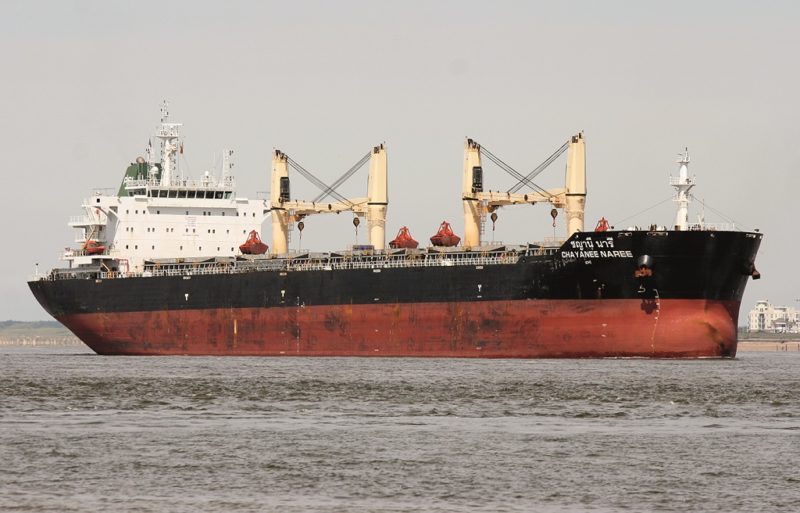
COLLISIONS, GROUNDINGS and OTHER MARITIME OCCURENCES
The Handymax bulker Kanchana Naree ran aground in the Rio de la Plata off Buenos Aires on 2nd September 2018. She refloated two days later and was towed to an anchorage at Ensenada for investigation. She was insured for her cargo by the U. K. P. & I. Club, other vessels in the PSL fleet are under other P. & I. Clubs e.g. the Swedish P. & I. Club. PSL ships are classed for trading by NKK of Japan, American Bureau of Shipping, Bureau Veritas, and Lloyd’s Register of London.
The grey hulled cement carrier Chanya Naree collided with the fishing boat Sylvia off Munambam harbour in India on 31st March 2021 and three Indian fishermen were injured. The Handymax bulker Chayanee Naree sailed from Santos in Brazil and arrived off West Africa a week later, and then drifted for a week off the coast of the Benin Republic while small boats secretly loaded large bags of 30 slabs of narcotics into her number one hold. Anti-narcotics and Customs officials found the bags on arrival at Apapa-Lagos port, and all of the parties onboard the ship and onshore were arrested and prosecuted for their part in this daring operation.
The Handysize bulker Mookda Naree in May 2021 was carrying a difficult cargo on a time charter party and PSL needed to make a minor change to this charter party, but it led to the unfortunate arrest of the vessel. The French trader whose cargo was being carried was forced to post a ‘Charter Party Guarantee’ of his firm intentions to pay his payment liabilities in order for the time charter party to be concluded.
In order to avoid such complications to charter parties, PSL bulkers are positioned either in the Pacific or Atlantic regions for chartering purposes. The Pacific region covers Trans Pacific round voyages, South East Asia to Far East round voyages, and the Atlantic region covers Europe to U.S.A. and South American ports, and in the reverse direction across the Atlantic. This distinction in world operations allows vessels to be deployed for longer periods in one of the two regions, without costly ballast voyages seeking their next cargoes.
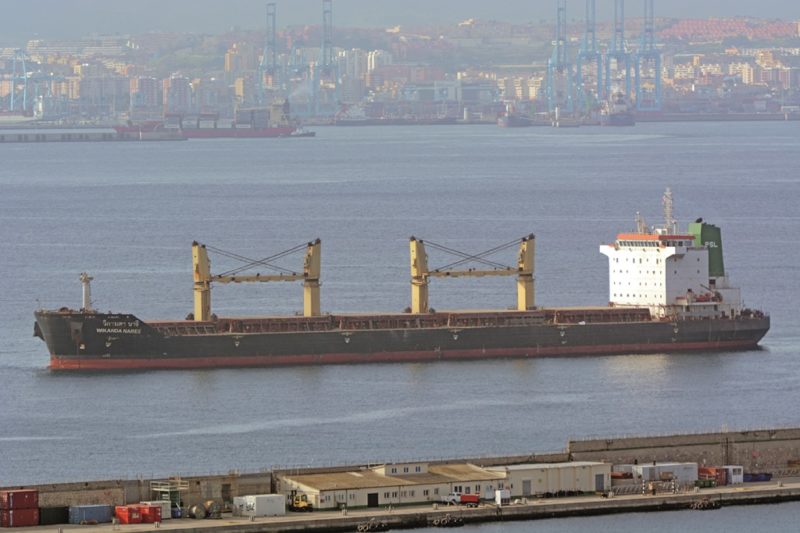
COMPETING THAI BULK FLEETS
Thoresen & Company (Bangkok) Ltd. was established in Hong Kong in 1904 as a shipping agency for Norwegian shipping companies, with a branch office established in Bangkok in 1926. The agency work grew and their first owned ship, Hai Lee of 15,865 dwt, with their classic funnel colours of long, vertical blue and red stripes, was purchased in 1985 from Norwegian Asia Line, for liner services to Far East ports such as Yokohama and for the import of sugar cargoes from Port Louis in Mauritius. The owned fleet in 1998 was two dozen strong included the multi-purpose sisters Thor Sailor, Thor Sea, Thor Skipper, Thor Sky, Thor Spirit, Thor Star and Thor Sun of 16,250 dwt, and expanded from 25 to 33 vessels in 2003 but was trimmed back to fifteen vessels in 2011, and currently the Thoresen fleet stands at seventeen owned bulkers of up to 58,780 dwt, six open hatch bulkers of up to 54,880 dwt, and forty bulkers on time charter.
United Thai Shipping Corporation (Unithai Line PLC) was formed in 1976 to serve the Thai Government vision of founding a Thai national flag carrier and began Europe to South East Asia and U.S.A. conventional liner services. Services were expanded to South and West Africa, the Middle East and the Far East with owned general cargo ships such as Yala Navee of 19,350 dwt and built in 1976 by the Kurushima Dockyard at Onishi and purchased second hand in 1996 as Kota Jati from Pacific International Lines (PIL). The United Shipyard and Engineering Ltd. (UTSE) was established in 1990 at Laem Chabang Port, with two floating docks for repair work, one for ships up to 50,000 dwt and the other for ships up to 140,000 dwt, and has also completed small general cargo ships of up to 3,000 grt.
United Thai Logistics Co. Ltd. (UTLC) and United Thai Warehouse Co. Ltd. (UTWC) were formed as joint ventures in 1994. Unithai Container Terminal began operations in Samut Prakan province in 1997, and offshore companies had been formed by Millennium year. The ‘UniGear’ service joint venture with GearBulk of Norway began a South African service in 2001, with Panamax bulk carriers owned from a year later. Joint ventures have since been formed with Myanmar, Vietnam and Korean shipping companies. The Unithai logo of three seagulls in the red and blue colours of the Thai national flag represents worldwide services, both westwards and eastwards.
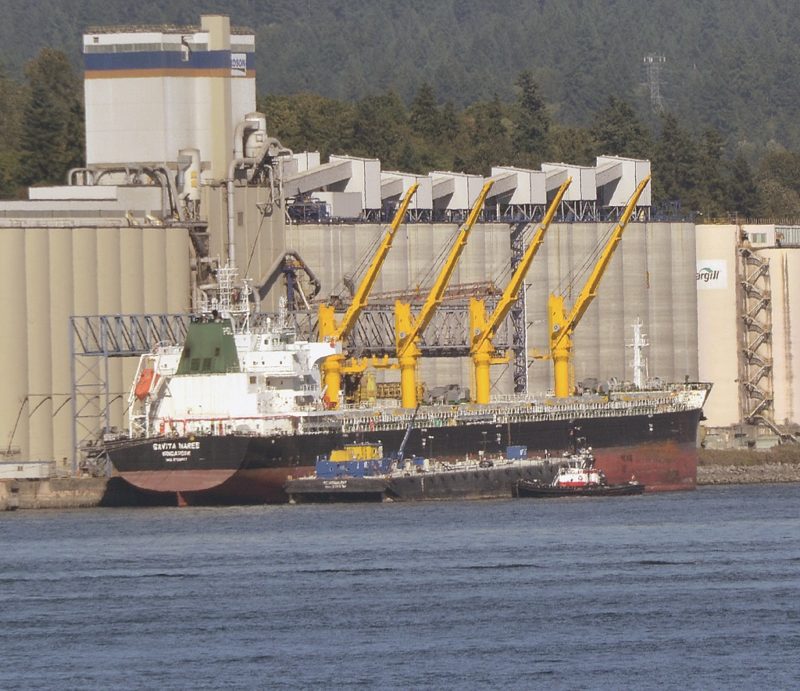
POSTSCRIPT
Precious Shipping Ltd. (PSL) is thus carrying on the great tramping traditions that began in Britain almost two hundred years ago with dozens of tramp shipping companies in Newcastle. Glasgow, Cardiff and London. Tramping around the world with big, bulk cargoes in a modern eco-friendly bulk carrier fitted with oil fuel scrubbers might seem to be the ideal for connoisseurs and aficionados of tramp shipping, but it is not quite the same today for their crews in the Covid-19 fuelled paranoia.
All of the ports of the world are at pains to demand ‘Do not disembark!’ by all members of the crew in very firm instructions in the radio messages sent before and while entering ports. Crews thus end up with never having been ashore for eighteen months or so, and wondering what they have done to deserve such shocking treatment. PSL employs 800 Thai and Indian seagoing personnel on worldwide trading on charter of their bulkers to big traders such as Cargill Grain, Oldendorff Carriers Gmbh, Pacific Basin Shipping, Helena Chartering, NYK, Mitsui-OSK and other Japanese shipping companies as well as Omega Maritime Chartering on short time charters of one to three months or on single voyage charters.
Average bulker spot freight rates grew from $13,000 per day at the start of 2021 to well over $40,000 per day at the end of 2021. Five Handymax bulkers are fixed on long term charters at $17,013 per day, and one Supramax bulker is fixed on a long term
charter at £13,421 per day. Leading freight rate forecasters in the shipping markets, predict that this big increase in bulk freight rates throughout 2021 will continue for another two years, and importers and exporters of bulk commodities must prepare themselves for elevated freight rates increasing further by around 20% for the foreseeable future.
Predictions for the years between 2020 and 2026 are that the compound annual growth rate of the world dry bulker fleet will grow at 3.8% compared to a total dry and wet bulk fleet growth of only 2.0 %. Steel commodities growth will be up by 3.9%, grains up 3.8%, iron ore up 2.7% and coal up by 2.2% in a very optimistic future prediction of where world bulker owners should be focussing their future investments. This is in spite of signed agreements by world political leaders to cut the greenhouse emissions of burning coal by 2030, which in practice from previous signed agreements they very rarely actually achieve.
All PSL bulkers are registered in Bangkok under the Thai flag and not under so called ‘Flags of Convenience’ to cut registration costs and levels of maintenance of vessels. In March 2019, all Head Office management staff attended meetings on the ‘Code of Conduct and Anti-Corruption Policy Training’ in Bangkok. PSL seafaring staff are also highly trained at the PSL Training Centre in Bangkok, and at the Merchant Marine Training Centre (MMTC) in Samut Prakan Province of Thailand. Gold medals are awarded to those students graduating with the highest marks in navigation or engineering. Scholarships to MMTC are also awarded to selected potential students with financially challenged backgrounds.
Precious Shipping Ltd. complies with all of the United Nations Standards in New York on reporting of shipping problems and on sustainability of world resources in U. N. Global Reporting Initiatives (GRI) and U. N. Sustainable Development Goals (SDG). The PSL high core values of integrity, sustainability, tradition and innovation are maintained at all times to place the company in the very top echelon of the very best of world shipping companies.

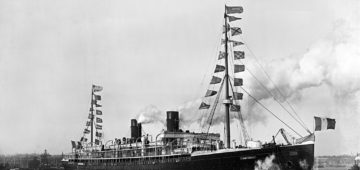


Comments
Sorry, comments are closed for this item